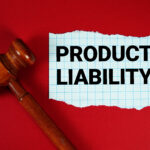A climate ratings firm created at French business university EDHEC has become the first to estimate projected financial losses for thousands of infrastructure assets under various climate change scenarios, its founder and chief executive said.
Better understanding the potential costs of climate change is increasingly important as political pressures have led to rollbacks in environmental policies and climate change targets in some countries including the United States.
“We saw a critical disconnect. Climate risks are accelerating and at the same time, most financial decisions still overlook them or treat them as vague, non-financial concerns,” Scientific Climate Ratings CEO Rémy Estran-Fraioli told Reuters.
Scientific Climate Ratings, majority owned by EDHEC and due to be spun out later this year, will initially cover around 6,000 assets before expanding early in 2026 to include more than 5,000 listed equities, he said.
While several companies have sought to assess a company’s exposure to the physical risks of climate change, such as wildfires or floods, most assessments of the potential effect on infrastructure are high-level.
Getting to grips with the financial risk embedded in the system is important as trillions of dollars are invested in infrastructure such as ports, airports and utilities, which are vulnerable to extreme weather events.
Using a global EDHEC dataset that tracks the assets in detail, the ratings will offer granular data to help improve financial risk assessment and decision-making for investors and companies.
The methodology includes two stages of ratings: A Potential Climate Exposure Ratings assessment will look at the asset’s exposure to future climate risks under prevailing government policies. An Effective Climate Risk Ratings will then estimate the potential financial impact of a number of climate scenarios from 2035 to 2050 using probability analysis, including the likely dollar impact expressed in terms of net asset value.
“Out of the 6,050 assets assessed, 1,088 are on track to experience losses of at least 24% by 2035 — and over 50% by 2050 if no action is taken,” Estran-Fraioli said.
Yet the assets with the best rating, A or B, account for just 2% of the expected loss, with the bottom 20%, F and G rated, responsible for nearly 50% of the expected loss, he added.
(Reporting by Simon Jessop; editing by Emelia Sithole-Matarise)
Was this article valuable?
Here are more articles you may enjoy.



 Product Liability Verdicts Are on the Rise but There Are Ways to Avoid Them
Product Liability Verdicts Are on the Rise but There Are Ways to Avoid Them  Dozens of State Attorneys General Urge Congress Not to Block AI Laws
Dozens of State Attorneys General Urge Congress Not to Block AI Laws  Lawsuit Over Burger King’s Whopper Ads Set Back by Federal Judge
Lawsuit Over Burger King’s Whopper Ads Set Back by Federal Judge  In Alabama, Shot Employee Gets No Workers’ Comp and No Employer’s Liability
In Alabama, Shot Employee Gets No Workers’ Comp and No Employer’s Liability 

